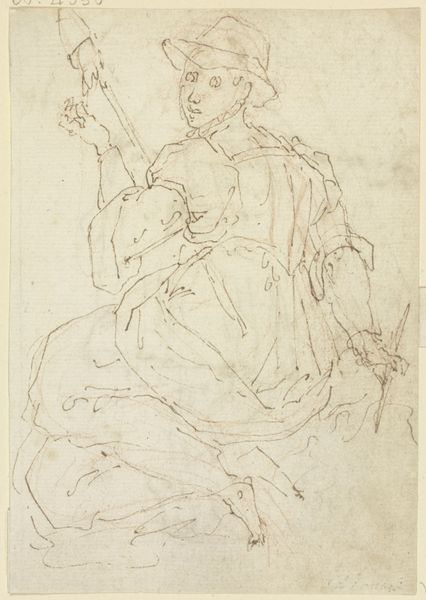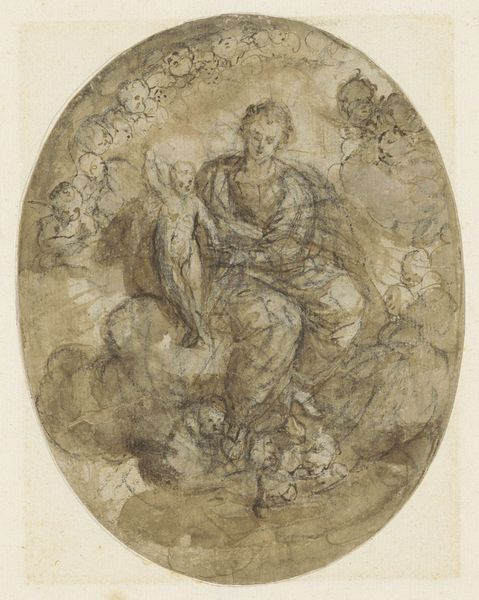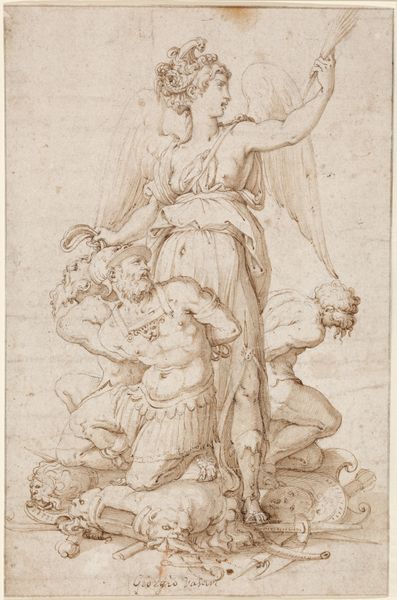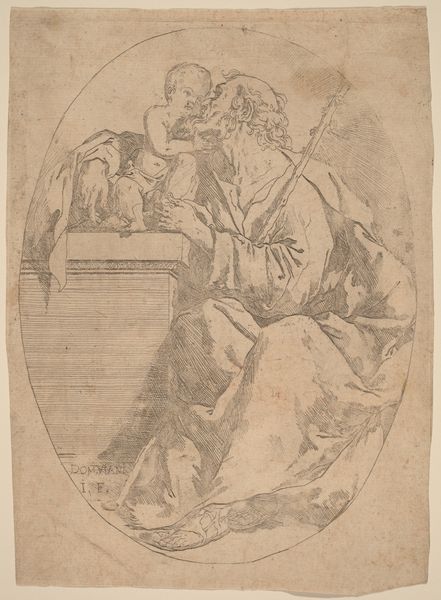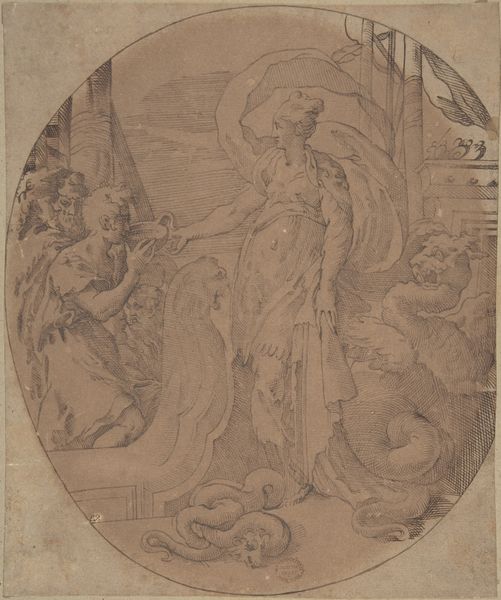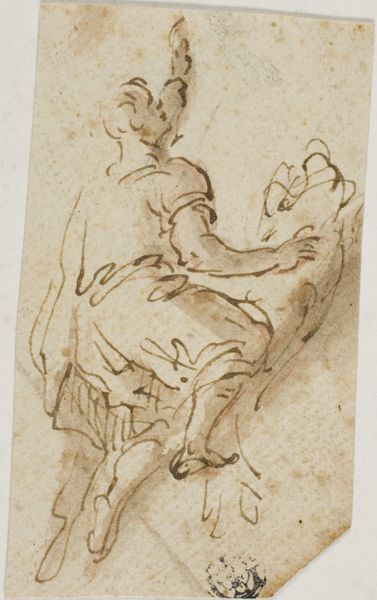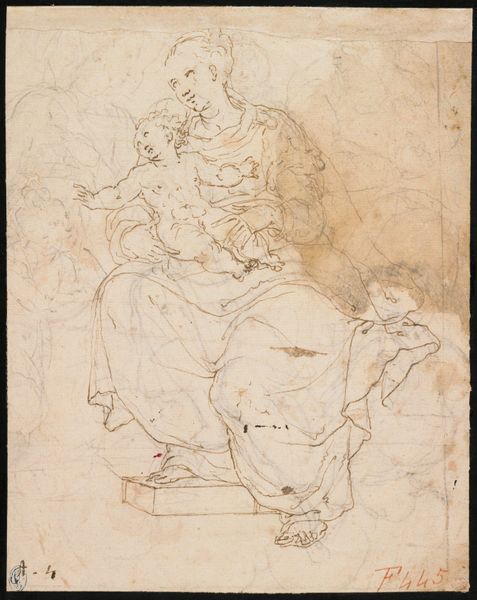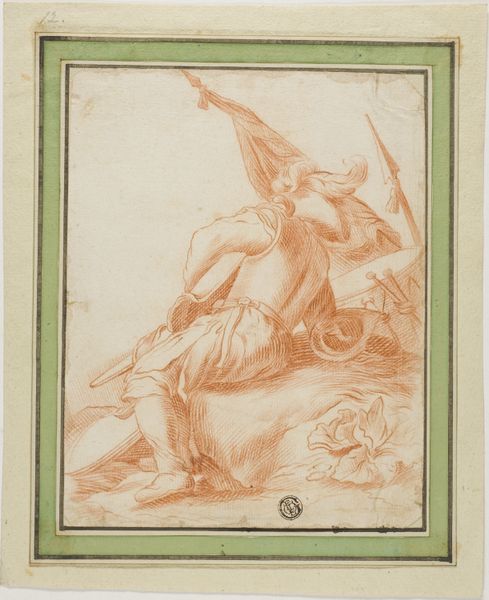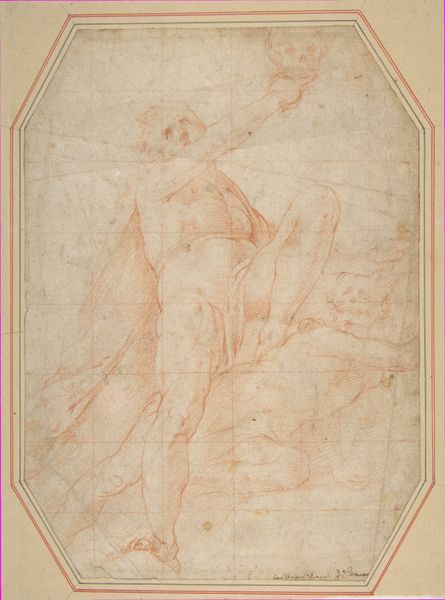
drawing, paper, ink, pencil, chalk, pen, charcoal, black-chalk
#
portrait
#
drawing
#
baroque
#
charcoal drawing
#
paper
#
ink
#
pencil drawing
#
pencil
#
chalk
#
pen
#
charcoal
#
history-painting
#
academic-art
#
black-chalk
#
rococo
Dimensions: 123 × 94 mm
Copyright: Public Domain
Curator: François Le Moyne's study, Saint John the Evangelist. It is difficult to give it a definitive date, however, the work on paper showcases ink, charcoal, chalk, and pencil elements. Editor: The delicacy of the materials! It gives the scene an ephemeral quality, like a fleeting vision. Look at the thin paper, so fragile, bearing witness to this figure. I feel like it may dissipate any moment now! Curator: Considering the socio-political landscape, this depiction plays into the grand tradition of history painting but does so on an intimate scale. Its presence at the Art Institute speaks volumes about the institutional desire to canonize these preparatory sketches as artworks in their own right. The figure of John the Evangelist has always played an important role within society's history with depictions of the apostle helping shape public interpretations of faith and its disciples. Editor: Exactly! The academic approach is evident in the rendering of Saint John’s drapery, a real exploration of texture achieved through mixed media. Did Le Moyne, grappling with the Baroque ideals of high art, consciously wrestle with craft traditions like sketch-making here? Curator: Indeed! We can't forget the importance of material exchange that defines the dissemination of this artwork. The cost of producing something such as this, even being a drawing, reflects both labor and wealth. Also consider the consumption aspect. Are there many copies? Was this an important artist during his time, whose artworks circulated through the commercial art world? Editor: Also notice the use of clouds as almost palpable, functional forms. The politics of religious imagery here are subtle, aimed less at overt piety and more towards… Curator: Devotional introspection? Perhaps appealing to private patrons of faith or as a preliminary work toward something much more impactful with access to far wider audiences? Editor: Maybe so! All told, observing the technical skill mingled with its eventual placement in a prominent museum creates a unique lens through which to reconsider not just religious, but Baroque artworks entirely. Curator: For me, I think, reflecting on Le Moyne's processes gives a certain gravity to an artwork of this era that it perhaps might otherwise have been without a focus on art history and historical significance.
Comments
No comments
Be the first to comment and join the conversation on the ultimate creative platform.


